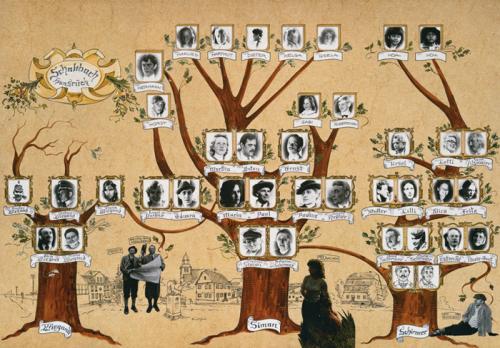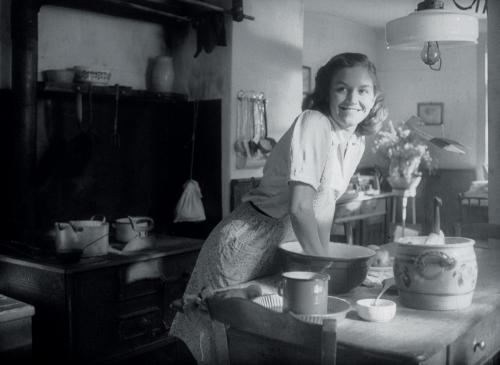Heimat - Edgar Reitz’s epic film brings 20th-century German history home

The first two series of Edgar Reitz’s epic film trilogy Heimat have just been re-released in hefty box sets – which has prompted me to add up the time I’ve dedicated to his monumental chronicle over the past three decades.
I spent 11 consecutive Saturdays in front of BBC2 in 1987 watching the 11 episodes (16 hours) of the first Heimat - three years after Reitz's awesome drama of life in a German village from 1919 to 1982 premiered at the Munich Film Festival.
I devoted an even bigger chunk of my life to the follow-up, Heimat 2: Chronicle of a Generation, set in the 1960s, which required an investment of 25 hours over 13 episodes in 1994 (again on BBC2).
And I signed up right away for Heimat 3: A Chronicle of Endings and Beginnings, hunkering down in a small Soho preview cinema for 11 hours over three nights in 2005 to see Reitz take his narrative from the fall of the Berlin Wall in 1989 to the dawn of the new millennium.
As the trilogy adds up to a total of 52 hours, it almost seems as though I’ve spent more time in adulthood in Reitz’s Heimat (the German word means home or homeland) than in my own.
That’s, of course, the way that many viewers and listeners feel about Weatherfield or Albert Square or Ambridge. You could call Heimat an upmarket soap – though Reitz himself wouldn’t agree with you. He shot the trilogy on 35mm film stock and resolutely calls his series films.
That said, the three Heimats certainly share the addictiveness of TV soaps. Yet they also have the richness and depth of a great 19th-century novel (“Tolstoyan’ is the word that tends to get bandied around here).
The latest updates, reviews and unmissable series to watch and more!

Subtitled A Chronicle Of Germany, the first Heimat is very much a family saga. Set in the fictional village of Schabbach in the Hunsrück (part of the Rhineland-Palatinate in southwest Germany), the series opens in 1919 with the return home from the war of Paul Simon, the son of the village blacksmith.
The succeeding drama revolves around the fortunes of the Simon clan, but the pivotal figure is Paul’s wife, Maria, the daughter of the village mayor. (Ageing on screen from 19 to 82, though only 27-29 in real life at the time, Marita Breuer gives an astonishing performance in the role.)
The Simons live through the humiliating aftermath of the First World War, the rise of Hitler and the Second World War, and Germany's post-war economic miracle. The century's great and terrible events, however, largely take place off screen. In the tide of history, Schabbach is very much a backwater.

For focusing so closely on the family hearth, Reitz came in for a fair amount of stick, with some accusing him of attempting a revisionist history, of applying a soothing balm to post-war German guilt over its Nazi past.
This is unfair. Reitz gives the attentive viewer more than enough details to grasp the bigger picture. Look out for the sudden appearance of Nazi armbands in the village. Watch the boy on a bicycle encountering a cheery soldier who is watching over the construction of what is clearly a concentration camp. Note when an SS officer alludes guardedly to the Final Solution.
Reitz didn't feel the need to amplify any of this. Having been appalled by the melodramatic nature of the 1978 US mini-series Holocaust, he resolved instead to draw upon his own family history and youthful memories (he was born in 1932) to show the Nazi era from the periphery.
He took a similarly personal approach to the way Heimat looks, adopting a narrative rhythm and visual style that couldn’t be further from the conventions of a TV mini-series or soap.
For a start, it’s largely in back and white. Now and again, though, there are sequences in colour. And very occasionally, in a touch later borrowed by Spielberg for Schindler’s List, within the black and white image a splash of colour provides startling emotional intensity.
And emotional intensity is what Heimat gives you. You may have to give up a chunk of your life to enjoy it – but the cumulative payback on your investment is enormous. Trust me, I’ve watched the first two Heimats twice.
Heimat: A Chronicle Of Germany & Heimat 2: Chronicle of a Generation are available in DVD box sets from Second Sight.
A film critic for over 25 years, Jason admits the job can occasionally be glamorous – sitting on a film festival jury in Portugal; hanging out with Baz Luhrmann at the Chateau Marmont; chatting with Sigourney Weaver about The Archers – but he mostly spends his time in darkened rooms watching films. He’s also written theatre and opera reviews, two guide books on Rome, and competed in a race for Yachting World, whose great wheeze it was to send a seasick film critic to write about his time on the ocean waves. But Jason is happiest on dry land with a classic screwball comedy or Hitchcock thriller.


